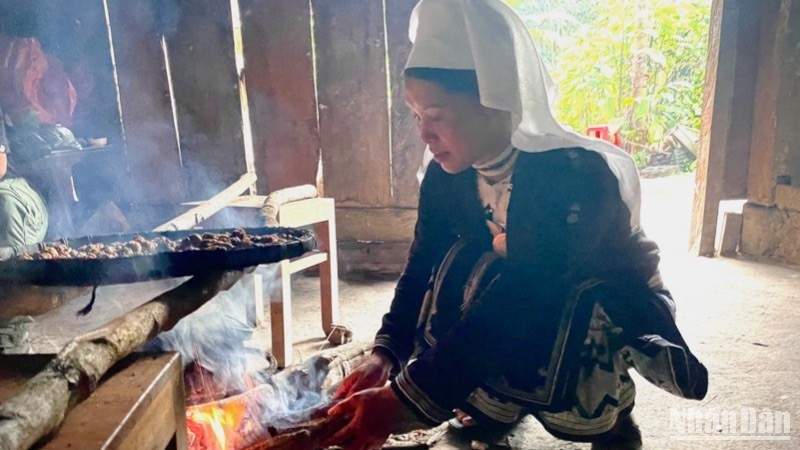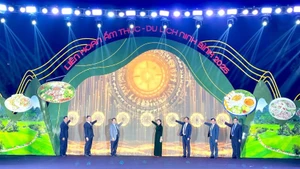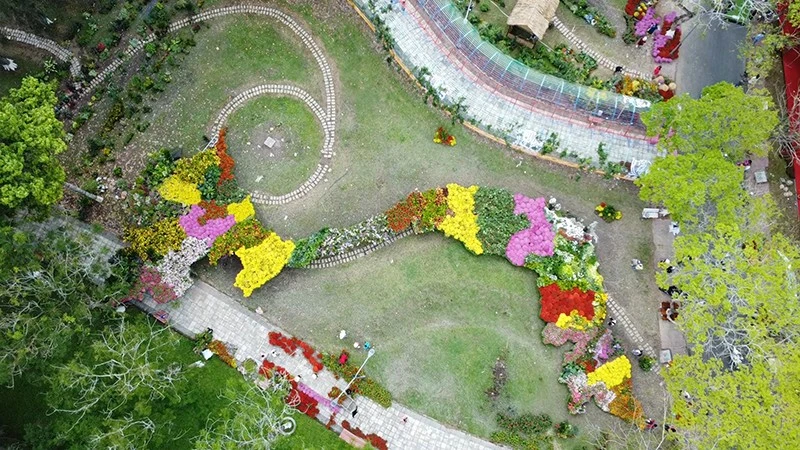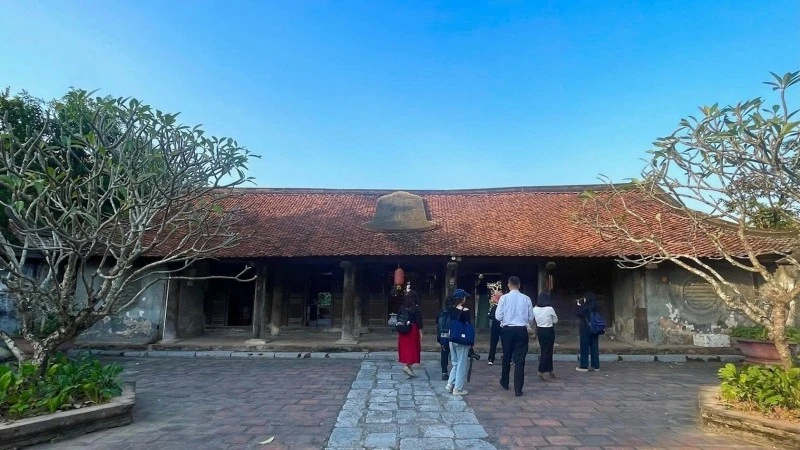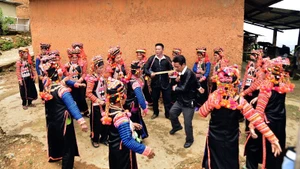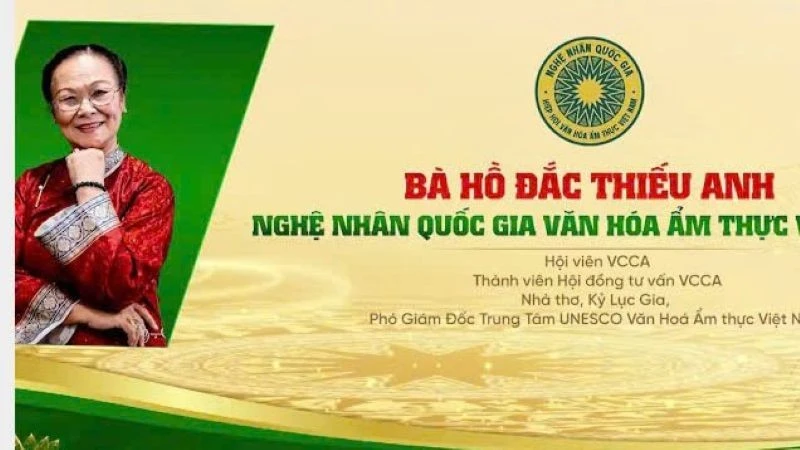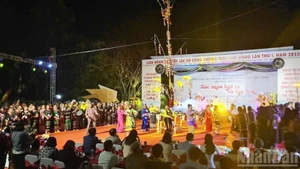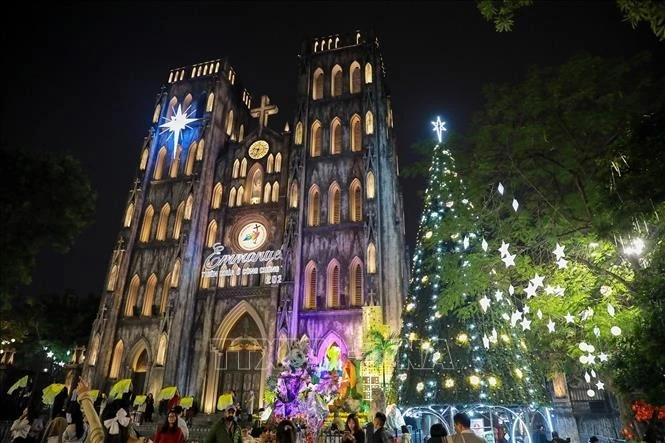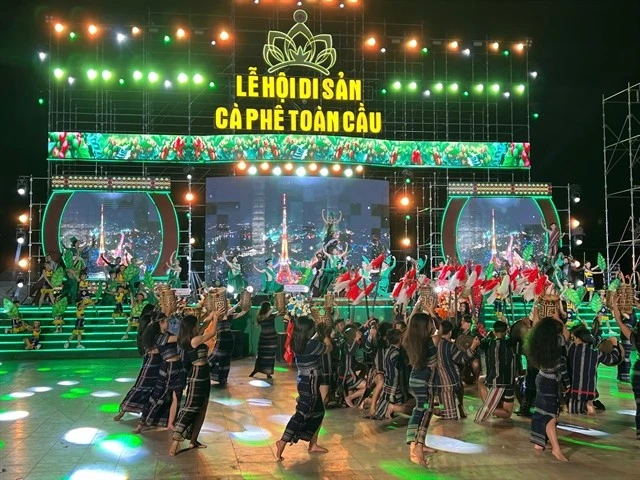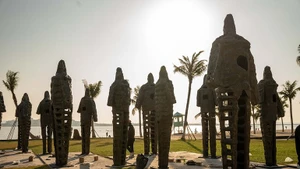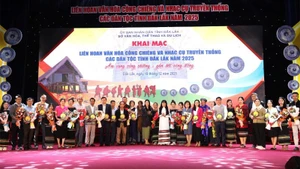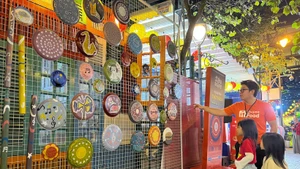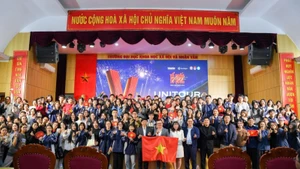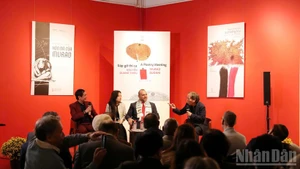The practicality and widespread availability of ready-made clothing have meant that traditional attire is increasingly reserved for ceremonial use or cultural performances during festivals, cultural events, or artistic gatherings. Sitting at a loom spinning flax at the northeast ethnic cultural, sports and tourism festival in Lang Son Province, Giang Thi Say, a H’Mong woman from Can Ty Commune, Quan Ba District, Ha Giang Province, shared that producing a traditional H’Mong outfit is a highly intricate and time-consuming process, involving spinning, weaving, dyeing, embroidery, sewing, and decorative work. As a result, although traditional garments are still worn, many have been significantly modernised.
The outfit she was wearing was a clear example. Made from industrial fabric, it was tailored in a traditional style. Its accessories, motifs, and overall styling reflect a blend of conventional patterns and innovative designs.
More than just an expression of ethnic identity, traditional clothing encapsulates the cultural heritage of each group. Every garment tells its story, carrying messages about the community’s lifestyle and creative outlook. The system of symbols, patterns, and decorative details on each piece often reflects the surrounding natural environment and embodies spiritual beliefs, rituals, and values of the ethnic group.
However, in regions with high levels of cultural interchange, where many ethnic groups live together, the traditional dress is particularly prone to mixing and transformation. This blend often distorts original features, erasing key characteristics and making it difficult to determine a garment’s ethnic origin.
In response, efforts to preserve traditional ethnic costumes have been implemented through various strategies. The Ministry of Culture, Sports and Tourism has launched a programme to preserve the traditional clothing of Viet Nam’s ethnic minorities, running until 2030. One of its main objectives is to safeguard and revitalise traditional attire, encouraging its wider use among ethnic communities.
Many localities and institutions have adopted tailored approaches to protect and popularise traditional dress. At the Tua Chua District Boarding High School for Ethnic Minorities in Dien Bien Province, over 400 students from H’Mong, Thai, Hoa, Kho Mu, and Dao backgrounds are educated.
While students wear modern clothes for convenience during school hours, the school requires them to don their traditional costumes every Monday and during key holidays and festivals throughout the year.
Since tourism is now recognised as an economic driver, and indigenous culture is considered a vital resource, many localities are leveraging ethnic culture for tourism development. One notable example is Cao Bang Province, where local authorities guide residents to incorporate distinctive elements from traditional costumes into tourism offerings.
The Dao Tien community in Hoai Khao hamlet, Quang Thanh Commune, Nguyen Binh District, has only recently started engaging in community-based tourism. The small village has already welcomed several groups of visitors for overnight stays and cultural experiences centred around traditional dress. Tourists are drawn to the opportunity to learn hands-on techniques such as indigo dyeing, embroidery, and beeswax batik printing.
Residents have also cleverly adapted symbolic motifs, such as tiger footprints, chrysanthemum flowers, and zigzag patterns, into souvenir items like bags, purses, scarves, and cushion covers. These items are accompanied by fascinating stories that help explain the cultural significance of the symbols.
Similarly, at the community cultural village of Khuoi Khon in Kim Cuc Commune, Bao Lac District, traditional clothing is displayed, introduced, and sold as tourism products. Alongside original, high-value handmade outfits, brocade fabrics and iconic Lo Lo motifs have been applied to products like phone cases, baby carriers, and pillowcases. Locals also encourage interaction by inviting tourists to try on traditional garments, observe weaving techniques, and learn how to wrap a three-layer headdress.
Some localities have also set out plans to revive cotton cultivation and the traditional crafts of hand-weaving and dyeing.
Harnessing the cultural identity embedded in traditional attire as a tourism product is a promising strategy for preservation. However, this alone is not strong enough to stimulate significant demand or provide a clear incentive for communities to fully revive their textile traditions.
To make conservation efforts more effective in the future, the cultural sector must conduct systematic research into the symbolic elements of traditional clothing, particularly the artistic and decorative meanings behind embroidery and patterns. Such studies can then guide communities in selectively integrating these elements into contemporary fashion in a way that remains faithful to tradition while enhancing its appeal.
Training ethnic minority women in tailoring skills to enable them to create intricate and fashionable garments is also essential.
More broadly, provinces with similar cultural backgrounds and terrain could explore collaborative models to establish shared raw material zones and value chains, from cotton cultivation and fabric production to flax pounding, fibre spinning, embroidery, and fabric patching. These could then be creatively integrated into fashion design, resulting in regionally distinctive products that build strong cultural brands and enhance the value of tourism offerings.
